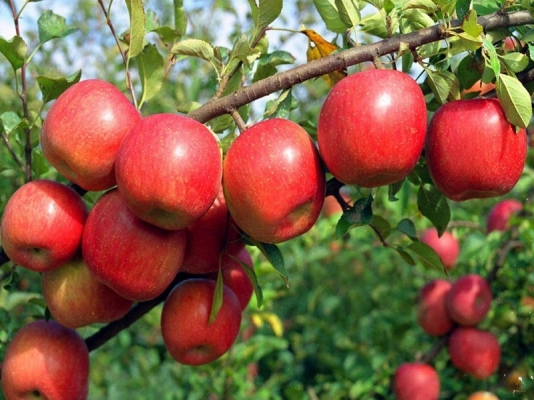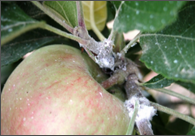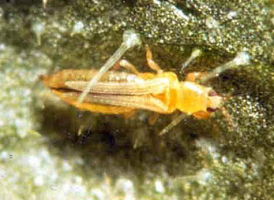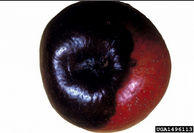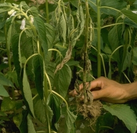Red June: Its fruits are small to medium in size, round to egg shaped and is red in color. Flesh is white, normal juicy and is light sour in taste. Fruits mature in end-June to first week of July.
Fanny: Its fruits are medium size and round in shape. It has shining peel and surface is green-yellow in color. Flesh is crispy, normal juicy and light sour in taste. Fruits are medium quality. Fruits mature in first fortnight of July. Fruits have medium storage capacity.
Benoni: It has medium sized, egg to cone shaped fruits. It has shining peel and its peel is yellow in color having red lines on it. Flesh is crispy and is juicy. It has good transportation and storage capacity. The variety matures in first week of July.
Chaubattia Princess: Flesh is creamy white, granular, firm, juicy and juicier. The variety matures in third week of June.
Chaubattia Anupam: The variety matures in first week of July. It has tastier fruits which is sweet and has good storage capacity.
King of the pippin: Fruits are medium size and egg to cone shape. It has shining peel which having light violet color stripes. The fruits contain crispy flesh, juicy and light sour in taste. The fruit matures in end week of July to first week of September. It has medium storage capacity.
Mcintosh: It has medium sized and round shape fruits. Fruits are shining and surface is green-yellow in color. It has crispy flesh which is juicy and sweet in taste. The fruit matures in first to third week of August.
Spartan: It has medium sized fruits, which are flat, thin peel which is smooth and dark red in color. The fruits mature in mid-August.
Red Gold: Fruits are medium sized which is cone shaped. It has red peel, hard, thick, waxy, smooth, and shining and is of mixed stripes. The fruits are of good quality, storage and transportation. Fruits mature in second to third week of August.
Cortland: Fruits are medium egg-shaped, peel is smooth, yellow striped on red peel. White color flesh taking greenish color which is hard, juicy and sweet in taste. Fruit is of good quality, storage and transportation. The fruits mature in second fortnight of August.
Red Delicious: Its fruits are big and egg shaped. It has smooth peel and peel is deep yellow having red striped on it. Flesh is buttery soft and crispy. The fruits mature in end week of August to first week of September.
Stocking Delicious: It has big and egg shaped fruits. It has yellow flesh, juicy and sweet in taste.
Rich-a-red: It has juicy, sweet and delicious flesh. The fruits mature in end week of August to first week of December. It has good storage capacity.
Golden Delicious: It has medium to big sized fruits which are egg shaped. Flesh is buttery white, crispy, sweet and aromatic. The fruit matures in first fortnight of September.
Winter Delicious: This variety has big sized fruits. It has smooth thick peel which is light green violet in color. The variety matures in second fortnight of September. It has good storage and transportation capacity.
Ambri: It has medium to big sized fruits which is round-egg shaped. Flesh is smooth, crispy, less juicy, white and sweet. The fruit matures in end-September.
Ambred: It has long trees which are spreading nature. Fruit are medium in shape which is cone shaped. Fruits peel is medium thick, smooth, shining and similar in shape. Flesh is white, granular and juicy in nature. The fruit matures in second week of September.
Starkrimson Delicious: The variety has sweet flesh which is juicy in nature. It is continuous yield giving variety.
Freedom: The variety is resistant to apple scab and fire blight and is tolerant to powdery mildew. The variety is productive and early maturing. It has creamy flesh, medium soft and juicy in nature.
Fuzzy: The variety is developed in Japan. The fruit is round, flat and long big in shape. The variety matures inn first fortnight of November. It has good storage capacity.
Liberty: Fruits are flat in shape. Flesh is juicy, granular and fine. Taste is light sour and good. The variety is resistant to apple scab.

